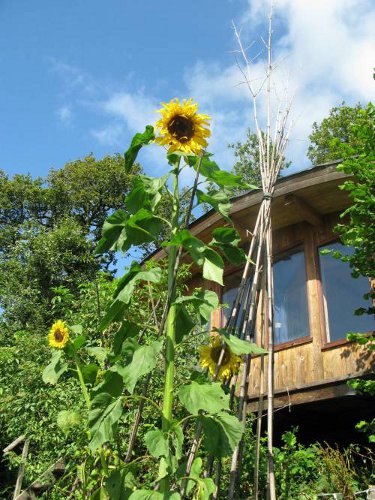A few years ago an article appeared in the news magazine of the Forestry Contracting Association which began:
“There can be few contractors who have not thought sometimes whilst working in the woods ‘If it was my wood I would do things differently……’ I certainly did in my contracting days, as the realisation slowly dawned that ‘being your own boss’ often still means working to other peoples priorities and deadlines.
Perhaps one would choose to diversify species and products, or develop another use of the woodland alongside more traditional management. Or build a shed as a workspace in the woods, perhaps even a house to manage the woodland from. Built from timber of course, felled and milled on site, and heated by wood…..
Sadly, the reality in the UK today is that the few people with that sort of access to woodland tend to be either very lucky, or very wealthy – and as a result such thoughts tend to remain the preserve only of reflective tea-breaks for most of us.”
 The article however went on to introduce woodland crofts, but these opening lines sum up quite nicely the ‘spirit’ behind them – and not just for forestry contractors, but for anyone. As we noted on the homepage, this sort of smaller-scale, ‘family forestry’ is common the world over, and for good reason: it works.
The article however went on to introduce woodland crofts, but these opening lines sum up quite nicely the ‘spirit’ behind them – and not just for forestry contractors, but for anyone. As we noted on the homepage, this sort of smaller-scale, ‘family forestry’ is common the world over, and for good reason: it works.
It works because the social and environmental aspects of woodland management are given equal prominence alongside the purely economic ones. Furthermore, economic benefits themselves are not restricted to a narrow view of products & species, but rather take a broader outlook on woodland, and indeed non-woodland, opportunities.
Everyone needs to generate income from their woodland, but if that income is generated through a dozen different contributions rather than just 1 or 2, the resulting enterprise is more secure, resilient, and likely to deliver a diverse range of benefits.
In this section we look in more depth at the three main aspects of life on a woodland croft: woodland management, housing, and business opportunities.